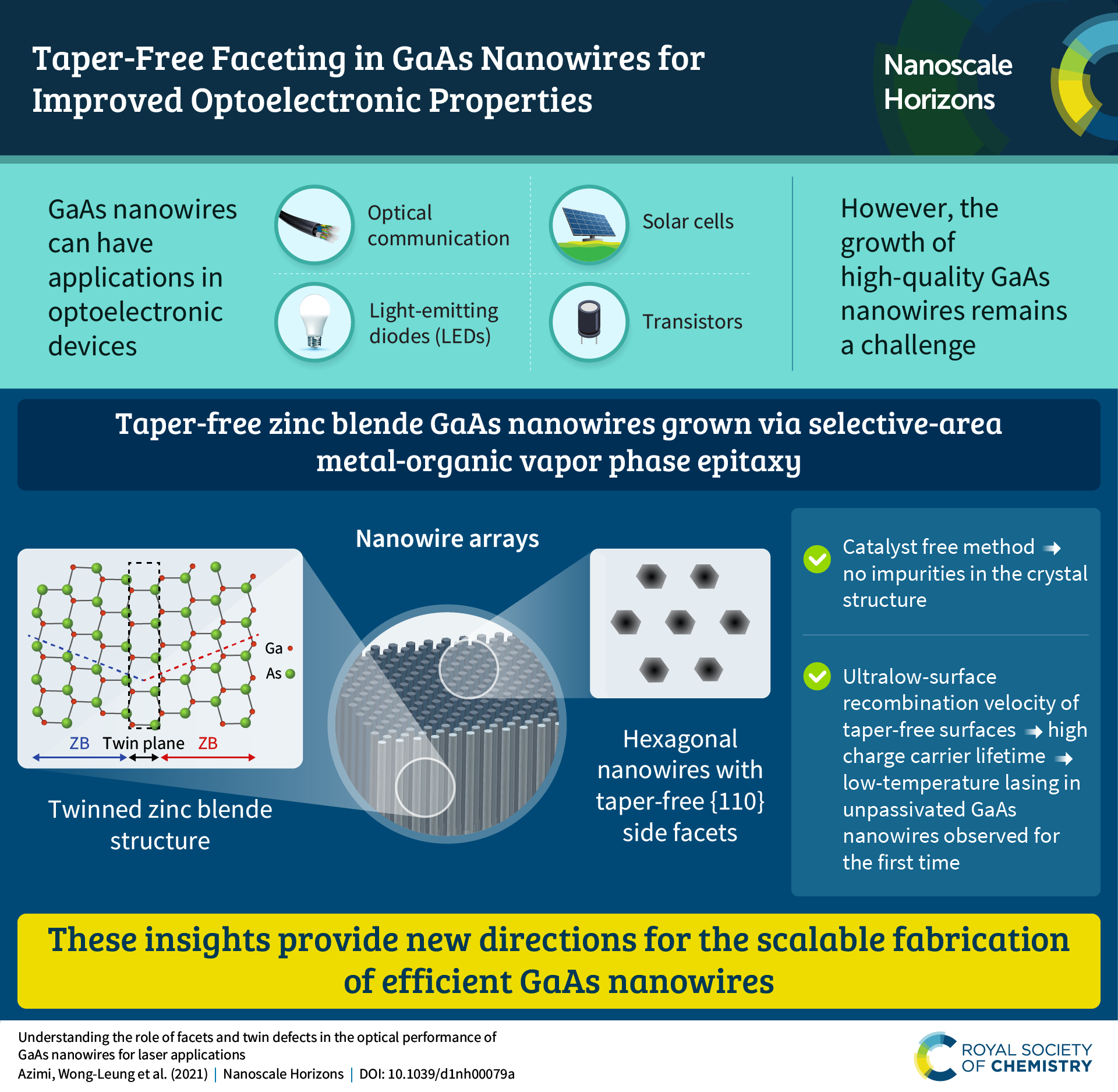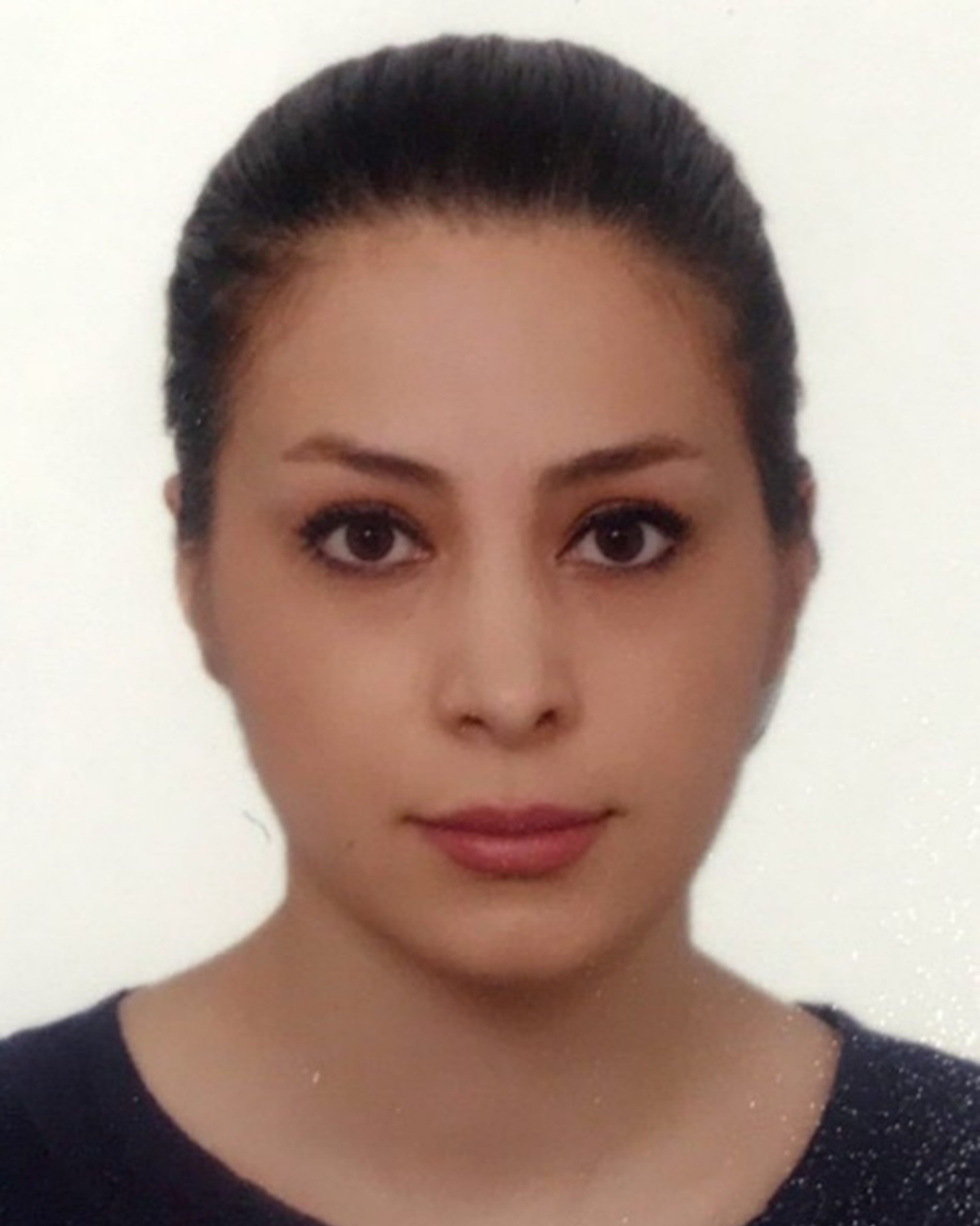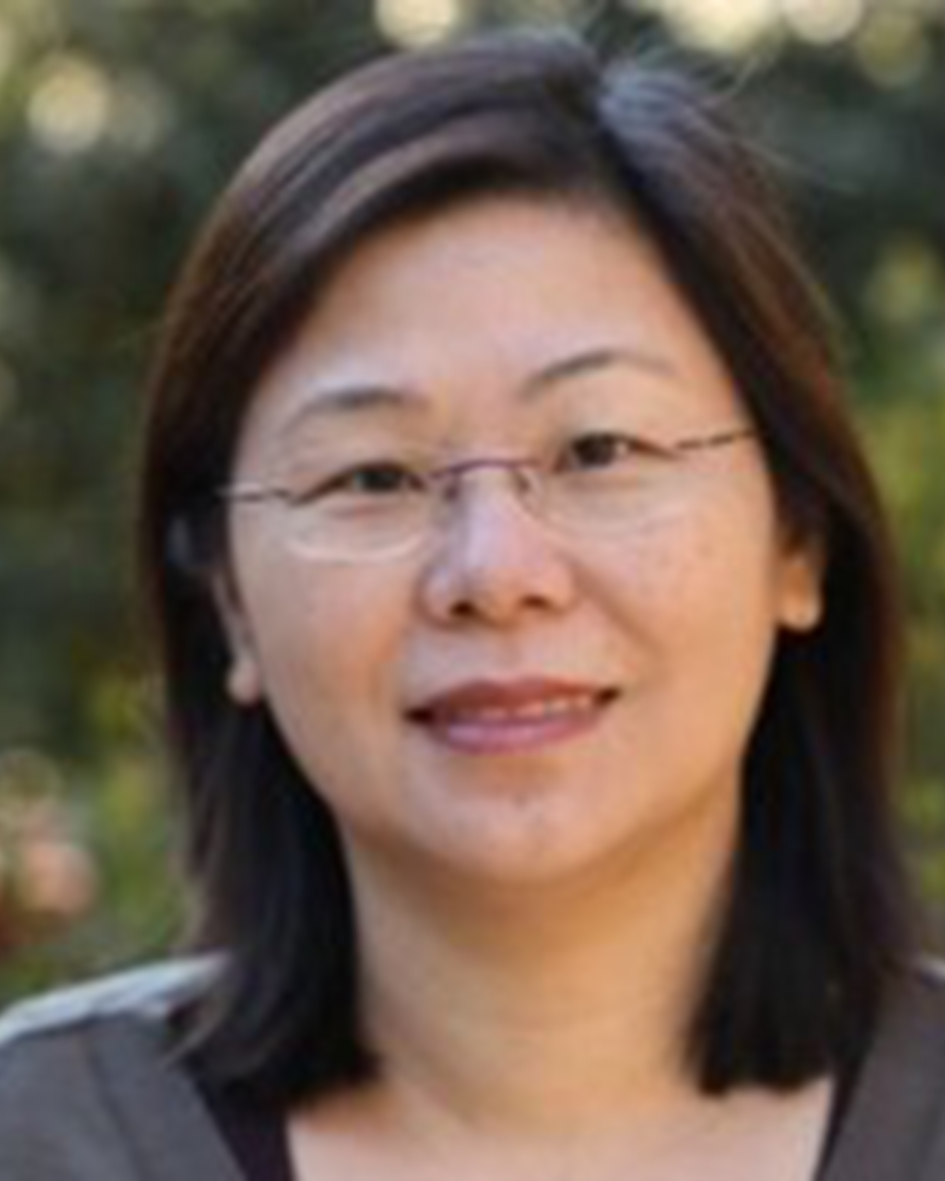Taper-Free Faceting in GaAs Nanowires for Improved Optoelectronic Properties
An infographic highlighting taper-free faceting as a method to gain ultralow-surface recombination velocity in nanowires
We would like to share an infographic highlighting the excellent work by Zahra Azimi, Jennifer Wong-Leung et al. on taper-free faceting in GaAs nanowires which gives the lowest surface recombination velocity reported for GaAs nanowires, despite the presence of twin defects! Check out the infographic below to learn more or get the full story from their Nanoscale Horizons article.
Understanding the role of facets and twin defects in the optical performance of GaAs nanowires for laser applications
Zahra Azimi, Nikita Gagrani, Jiangtao Qu, Olivier L. C. Lem, Sudha Mokkapati, Julie M. Cairney, Rongkun Zheng, Hark Hoe Tan, Chennupati Jagadish and Jennifer Wong-Leung
Nanoscale Horiz., 2021, DOI: 10.1039/D1NH00079A

Meet the authors

|
Zahra Azimi
Zahra Azimi is currently a PhD candidate in the Research School of Physics at the Australian National University. She received her BSc and MSc in Materials at Sharif University of Technology. Prior to starting her PhD, she worked as an R&D in a nanotechnology company with focus of self-cleaning and multi-functional coatings. Her research interests are epitaxial growth of III-V materials and characterisation and analysis of semiconductor nanostructures. Her PhD research focuses on the growth of InGaAs nanowires by selective area metal organic vapour phase epitaxy for optoelectronic applications |
 |
Jennifer Wong-Leung
Jennifer Wong-Leung is currently an honorary associate professor in the department of Electronic Materials Engineering at the Australian National University. She has a B.Sc. Hons. in Physics (University of Bristol, UK) and a Ph.D. (ANU, Australia). She was awarded an ARC postdoctoral fellowship (1998–2001) and an ARC QEII fellowship (2002–2007). She has over 20 years post-Ph.D. experience and has collaborated extensively with research groups in the US, Sweden, Norway and the UK as well in Australia. Her research interests and expertise are in the electron microscopy of semiconductors, processing, III–V nanowires, organic-inorganic halide perovskites, semiconductor heterostructures and nanostructures as well as electrical characterization techniques. |










